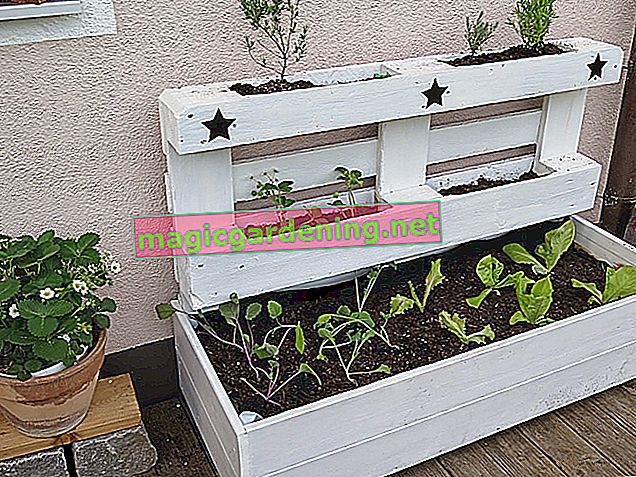
to water
Unlike many other garden plants, the checkerboard flower loves wet feet and must therefore be kept evenly moist. This also applies to the summer rest phase, in which the chess flower pulls in all the above-ground parts of the plant. However, avoid waterlogging so that the onions don't rot.
also read
- At what time does the checkerboard flower bloom?
- The checkerboard flower as an attractive houseplant
- The right location for the checkerboard flower
Fertilize
Fertilize the plants in the bed with compost at the beginning of the growing season in March. A second dose of fertilizer does not harm, but it is also not absolutely necessary.
If you care for the chess flower in the pot, special liquid fertilizers for flowering plants should be given every two weeks during the flowering phase.
To cut
At the end of May the flowering time of the checkerboard flower draws to a close. Anything that has faded should be cut out at this point.
The stems with the leaves remain there until they are very yellow. This is important because the chess flower moves important nutrients from the above-ground parts of the plant to the bulb after flowering.
Repot
If you cultivate the checkerboard flower in a pot or as a companion plant under a bonsai, it must be repotted every two to three years in spring in commercially available substrate.
wintering
The checkerboard flower is very robust and absolutely hardy. Even the lowest freezing temperatures cannot harm the fragile plant. Therefore, no special winter protection is required.
The only threat to the plant is drought, which threatens in winters without significant rainfall. If there is a cold frost, do the following:
- Water well on frost-free days.
- Use cold water. Warm water could stimulate the bulbs to float and the chess flower would freeze to death.
Pests and diseases
The checkerboard flower is extremely robust and is rarely attacked by pests or diseases.
Snails endanger plant health, as many species like to feed on the leaves of the chess flower. Bald damage prevents the plant from storing the nutrients in the bulbs before the resting phase. Therefore fight snails consistently.
Sometimes lilies will eat the leaves. Since the larvae of the bright red beetles can cause massive damage to all lily plants, they should be combated quickly. Has proven itself:
- collecting the adult beetles
- Showering the larvae
- Sprinkle rock flour (€ 14.95 on Amazon *) or coffee grounds
In the case of severe infestation, it is sometimes unavoidable to use an insecticide.
Tips
If you want to propagate the plant yourself, you should not remove all that has withered in May. Let some capsule fruits ripen and only cut them off if you do not want to self-sow.








